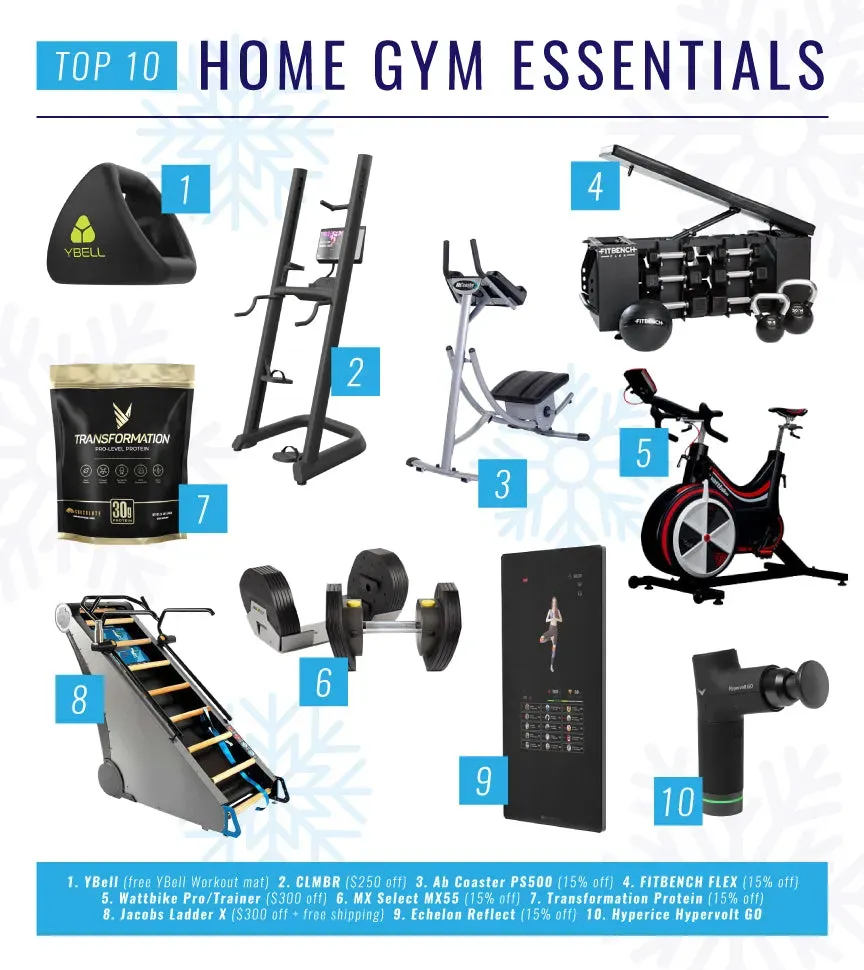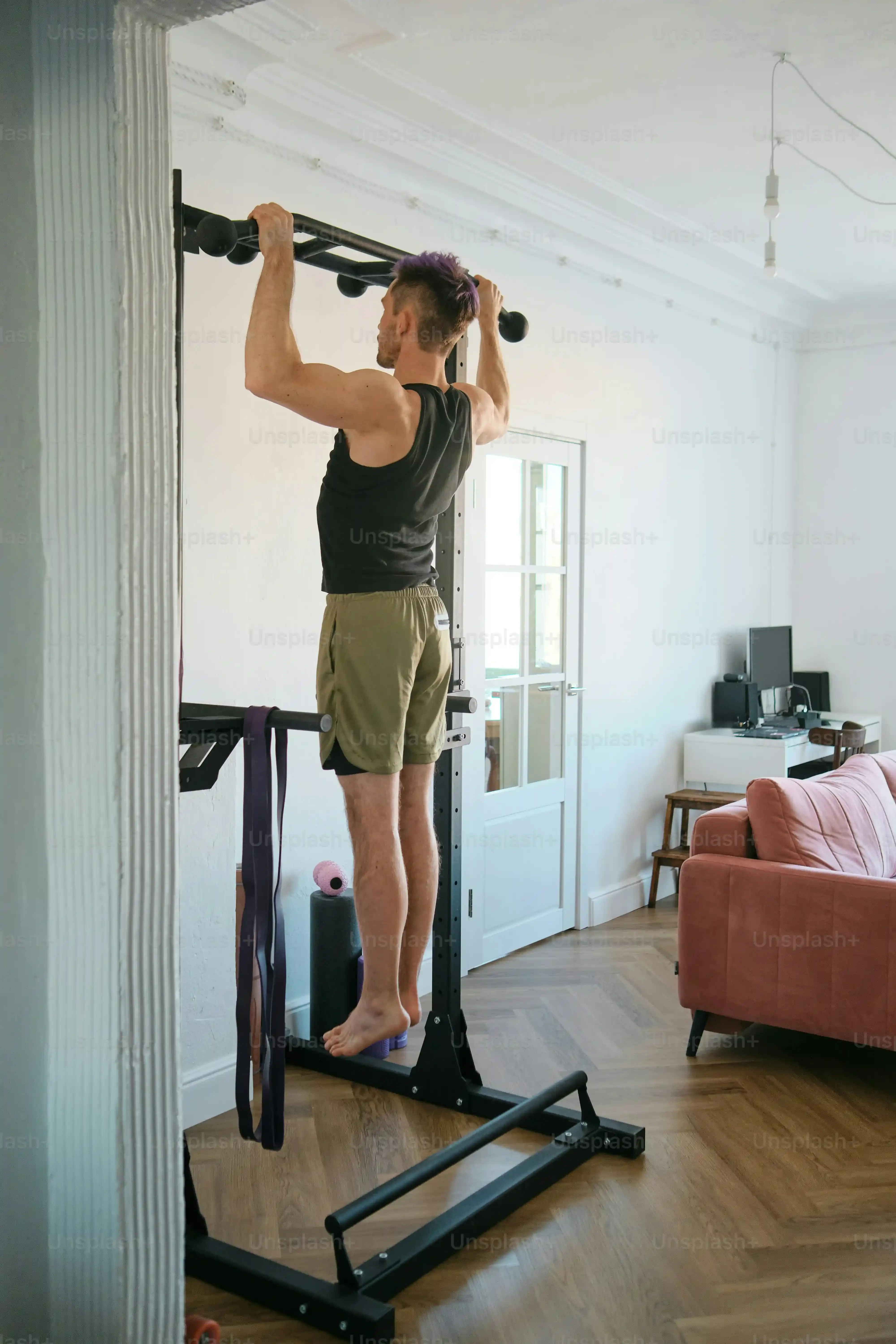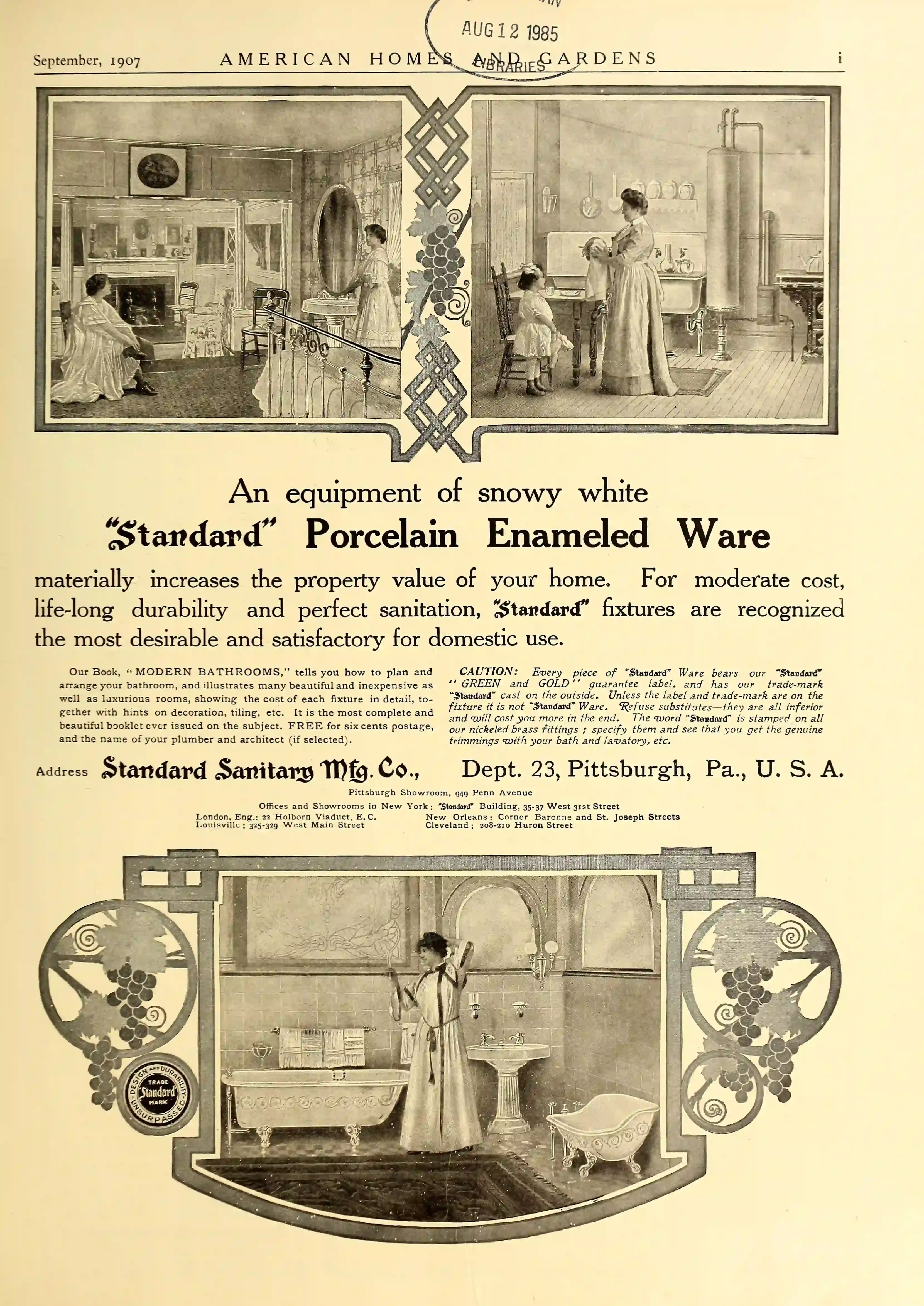Table of Contents
So, you’ve decided to ditch the crowded gym and sweat it out in your own space. Good call. No more waiting for the squat rack or wiping down someone else's questionable residue from a bench. But then you stare at that empty corner of your garage or spare room and think, " now what?" The sheer volume of gear out there can feel overwhelming, like trying to choose a streaming service – too many options, not enough clarity. That's where a solid home exercise equipment list comes in handy.
The Absolute Essentials on Your Home Exercise Equipment List
The Absolute Essentials on Your Home Exercise Equipment List
Starting Strong: Barbell, Plates, and Rack
Alright, let's talk brass tacks for your home exercise equipment list. If you're serious about getting strong, the absolute core of your gym needs to be a barbell, weight plates, and a rack. Period. You can do a shocking amount with just these items: squats, bench presses, overhead presses, deadlifts. It’s the foundation. Skimping here is like building a house on quicksand. You need a decent rack for safety, especially if you plan on pushing any kind of weight. Nobody wants to fail a squat without safety pins. Get a solid barbell that feels good in your hands and can handle the load. Plates? Start somewhere, maybe a few hundred pounds, and add as you go. Don't buy those flimsy plastic ones filled with sand, you'll regret it instantly.
The Humble, Yet Mighty, Bench and Flooring
Next up on that crucial home exercise equipment list is a weight bench. A flat bench is the minimum requirement, letting you hit presses and rows effectively. An adjustable bench offers more versatility, allowing for incline and decline work, which opens up more exercise options. Don't underestimate good flooring either. Dropping weights on bare concrete is a bad idea for both the weights and your floor. Rubber mats protect your gear, absorb some sound, and give you a stable surface to lift from. It might not seem glamorous, but it's essential for longevity and safety in your home gym setup.
- Solid Squat Rack (with safety pins, obviously)
- Quality Barbell (look for good knurling and spin)
- Weight Plates (start with iron or basic bumpers)
- Weight Bench (flat is okay, adjustable is better)
- Protective Flooring (rubber mats are the standard)
Building Your Home Gym: More MustHaves for Your Home Exercise Equipment List
Building Your Home Gym: More MustHaves for Your Home Exercise Equipment List
Adding Versatility: Dumbbells and Kettlebells
you've got the barbell setup sorted. What's next on your home exercise equipment list to really round things out? Dumbbells or kettlebells, or ideally, both. Barbell work is great for compound movements and lifting heavy, but dumbbells and kettlebells unlock a whole new world of exercises. Think single-arm rows, lunges with weight, bicep curls (yes, you might do those), kettlebell swings, goblet squats. They allow for unilateral training, hitting muscles independently to iron out imbalances. Plus, they are fantastic for accessory work to strengthen those smaller muscles that support your big lifts. Adjustable dumbbells are a lifesaver if space is tight and your budget isn't unlimited, but fixed weights often feel better and are quicker to use.
Pull Your Weight: The Essential Pull-Up Bar
Another non-negotiable for a solid home exercise equipment list? A pull-up bar. Seriously. Being able to pull your own body weight is fundamental strength. Pull-ups, chin-ups, hanging leg raises – these are classic movements that build serious upper body and core strength. You can get doorframe versions (be careful with your doorframe, though), wall-mounted bars, or even freestanding towers that include dip stations. Find one that fits your space and can support your weight. Don't skip on vertical pulling; it balances out all that pressing you'll be doing with the barbell and bench.
Consider these additions:
- A set of dumbbells (adjustable or fixed)
- One or two kettlebells (start with a moderate weight)
- A sturdy pull-up bar
- Resistance bands (loop bands and tube bands offer different uses)
Getting Grippy: Resistance Bands and More
Resistance bands might look simple, maybe even a little flimsy compared to iron, but they are incredibly versatile additions to any home exercise equipment list. Loop bands are great for warm-ups, glute activation, and adding accommodating resistance to lifts (like band-assisted pull-ups or banded squats). Tube bands with handles work well for exercises like rows, presses, and curls when dumbbells aren't an option or for travel. They take up zero space and are relatively inexpensive. Beyond bands, think about smaller items like a jump rope for quick cardio bursts or a medicine ball for throws and core work. These small pieces add variety and functionality without requiring a dedicated room.
Cardio and Strength Stars for Your Home Exercise Equipment List
Cardio and Strength Stars for Your Home Exercise Equipment List
Cardio and Strength Stars for Your Home Exercise Equipment List
so you've got your lifting foundation solid, but what about getting the heart pumping or isolating a muscle without balancing a barbell? This is where the bigger players on your home exercise equipment list might come in. We're talking cardio machines that don't require you to run in circles in your living room – think treadmills, ellipticals, or the ever-popular rowing machine. A good rower, like the Concept2, is practically a full-body workout disguised as cardio. Exercise bikes, from basic spin bikes to fancy interactive models, are also solid options if your knees hate running. For strength, maybe you're eyeing a cable machine for controlled movements or a multi-gym if you prefer machines over free weights. These additions take up more real estate and cash, no doubt, but they offer specific benefits that free weights sometimes can't match, like consistent tension through a range of motion or low-impact cardio.
SpaceSaving Solutions for Any Home Exercise Equipment List
SpaceSaving Solutions for Any Home Exercise Equipment List
Making the Most of Limited Square Footage
Look, not everyone has a three-car garage to turn into an iron sanctuary. Most of us are cramming our fitness dreams into a corner of the living room, a spare bedroom, or maybe a slightly-too-small basement. This is where smart SpaceSaving Solutions for Any Home Exercise Equipment List become crucial. You can't just buy the biggest, bulkiest machine you see. Think vertically or think foldable. Adjustable dumbbells that replace a whole rack of weights are a game changer. Resistance bands? They fit in a drawer. A sturdy, wall-mounted pull-up bar takes up zero floor space. Even cardio equipment now comes in more compact or foldable versions – ellipticals or treadmills that fold up against a wall, or rowing machines that can be stored upright. It's about being strategic with your purchases and prioritizing multi-functional gear over single-use behemoths.
Beyond the Basics: Accessories to Round Out Your Home Exercise Equipment List
Beyond the Basics: Accessories to Round Out Your Home Exercise Equipment List
Small Investments, Big Returns: Chalk, Straps, and Belts
you've got the big iron sorted on your home exercise equipment list. Now let's talk about the little things that make a huge difference. I'm talking about accessories. Think of them as the spices in your fitness recipe – not the main course, but they elevate everything. Lifting chalk? Essential for anything heavy or grippy, like deadlifts or pull-ups. It stops your sweaty hands from being the limiting factor. Lifting straps are another one. Before the purists start yelling, straps aren't cheating; they help you focus on pulling the weight with your back and legs when your grip would otherwise fail. Use them strategically, not for every warm-up set. And a good lifting belt? For heavy squats and deadlifts, it provides core stability and teaches you to brace properly. Don't wear it for everything, but when you're pushing near-maximal loads, it's a smart move for safety and performance.
Recovery and Mobility: Foam Rollers and Bands
Nobody likes being stiff and sore, right? So, rounding out your home exercise equipment list should include tools for recovery and mobility. A basic foam roller is non-negotiable. Spend five or ten minutes rolling out your quads, hamstrings, back, and lats after a tough session. It hurts in the moment, sure, but your muscles will thank you later. Lacrosse balls or specific massage balls are great for hitting those smaller, knotty spots that a foam roller can't quite reach – think glutes, shoulders, and pecs. Resistance bands, the thin loop kind, are also fantastic for dynamic warm-ups and mobility drills, helping you activate muscles before lifting and improve your range of motion. These aren't as flashy as a new set of dumbbells, but consistent use pays dividends in how you feel and perform.
So, which accessories should you add first?
- Lifting Chalk (Cheap and effective)
- Lifting Straps (For pulling heavy)
- Lifting Belt (For max effort lifts)
- Foam Roller (Essential for recovery)
- Massage Ball (Hits those stubborn knots)
- Thin Loop Bands (Warm-ups and mobility)
Building Your Battleground: Final Thoughts on Your Home Exercise Equipment List
Alright, you've got the rundown. Building a home gym isn't about buying every piece of shiny metal you see on Instagram. It's about being strategic, picking the gear that aligns with your goals and fits your space and budget. Start with the fundamentals – a good bar, some plates, a rack, a bench – and build from there. Cardio is crucial, but maybe a jump rope works just as well as a fancy bike if space is tight. Don't get distracted by gimmicks. Focus on tried-and-true equipment that allows for compound movements and progressive overload. Your home gym should be a place of consistent effort, not a museum of unused fitness gadgets. Choose wisely, train hard, and make that home exercise equipment list work for you.